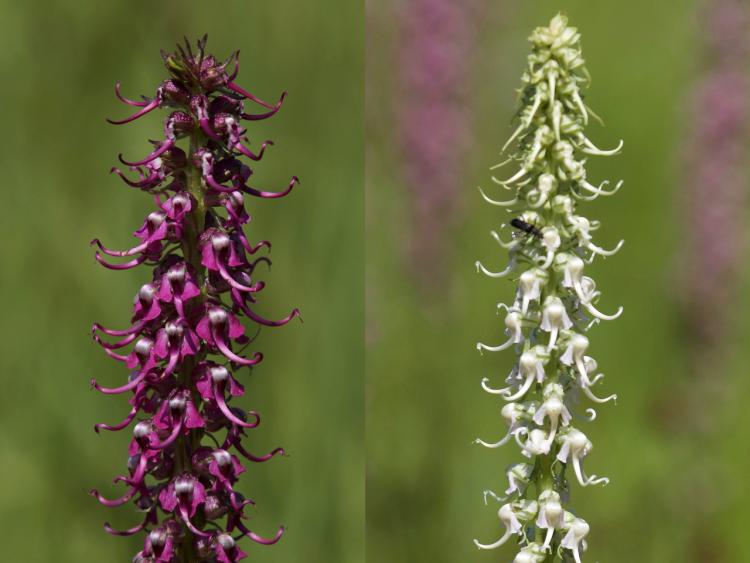Elaborate elephant's heads flowers require buzz pollination
In South Park, at the southern edge of Kenosha Pass, elephant's heads colored moist meadows for miles. Dense populations filled the high valleys drained by the Cimarron River, and they made a good showing in Yankee Boy Basin and Governor Basin above Ouray.
Elephant's heads are found in subalpine and alpine habitats in western mountains from New Mexico to Alaska and throughout Canada, except for Newfoundland and Nova Scotia. They were first described from Greenland, where they are found in one or a few tiny populations.
The common name elephant's heads aptly describes the shape of the flowers. Each has a bulbous, silvery head, flared and draping ears and a curving trunk held high. Inflorescences are columns composed of dozens of flowers. A plant may have one or many inflorescences and attain a height of 30 inches.
Their unusual flower shape has attracted the attention of pollination biologists, who discovered that this species is an obligate outcrosser, incapable of self-pollination. In Colorado, the primary pollinators are at least seven species of bumble bees in the genus Bombus.
Pollination biologists described specific bumble bee behaviors and floral morphology that convincingly suggest a long-term pattern of coevolution between bees and flowers. The flower has two lateral petals that suggest ears, and a median lower petal. Two upper petals are fused dorsally but not ventrally to form a galea (the elephant's domed forehead) with a rostral extension (the elephant's trunk).
The style, or female portion of the flower, extends through the trunk so that the stigma, which receives pollen, protrudes from the end of the trunk. The four anthers are hidden in the galea and they shed pollen through a small ventral opening at the base of the elephant's trunk.
How does the bee coax pollen from the anthers, which are inside the galea, or the elephant's head? It lands on the trunk, with its antennae reaching toward the galea. It then uses its mandibles to grasp the median ridge on the forehead, while pulling the lateral petals (ears) with its anterior legs. This brings the rostrum (trunk) beneath the bee so that its end (stigma) touches the center of the bee's abdomen.
The bee then vibrates its wings at a rate almost twice the rate it uses in flight. Buzzing wings vibrate the galea, spilling pollen that falls to the lower petal and splashes against the bee's abdomen and also forms an enveloping cloud. This unusual technique is called buzz pollination. The bee grooms the pollen from its body and packs it into corbiculae, the pollen baskets on its back legs.
The same bumble bees may also be harvesting pollen with buzz pollination from a second, intermingled species called shooting star, Dodecatheon pulchellum, which also has an unusual shape, though very different from elephant's heads. While hanging from the sharp point of the shooting star, they buzz, causing pollen to be released and shower down on them. Once again, the bee grooms pollen from its body, transferring it to the pollen baskets.
Elephant heads and shooting stars are commonly found intermixed and they flower at the same time. Bees carrying shooting star pollen also had elephant head pollen in their baskets, suggesting that mixed loads of pollen were delivered to each species, running the risk of rampant hybridization or failure of pollination. But this did not seem to be the case.
While bumble bees are efficient at combing pollen from their backs and sides, they have difficulty removing pollen from the undersides of the thorax and abdomen, the middle and last body segments, respectively.
The pollination biologists noted that the pollen of shooting stars falls and remains primarily on the thorax, where the shooting star stigma touches the bee. When bees buzz pollinate elephant's heads, the stigma comes in contact with the abdomen, where elephant's head pollen is most abundant. These differences in pollen retention and stigma contact minimize the hazard of cross pollination and hybridization.
Be sure to watch buzz pollination the next time you visit elephant's heads or shooting stars.


